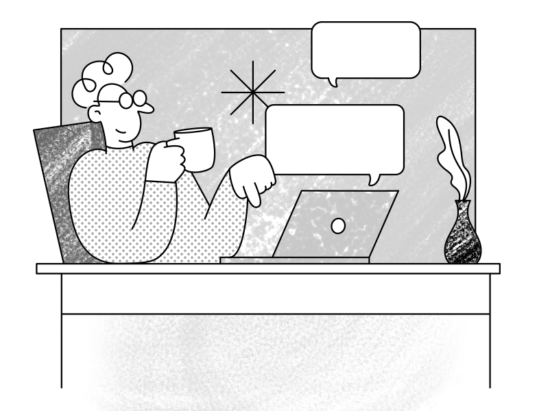You’re here because you want to create an e-commerce website. You’re also in really good company.
Why you should have an e-commerce site at all
It is an established fact that online sales are where growth is continuous. Online sale have been growing continuously from the get go, even in times of recession, and in times of economic boom they’ve grown faster than traditional sales
Additionally, the web influences almost 50% of our purchases – more and more people are checking out products online before heading out to the brick and mortar. Consumers are getting quite used to comparing prices and instantly knowing whether the product is available. And data from Experian Hitwise shows that ecommerce traffic increases in a shaky economy – mostly because buyers research purchases more thoroughly online before committing to buy.
During the holiday season we shop for gifts, and buying a gift is a chore only if you don’t know what to buy. People have flocked to the web for help in that regard, looking for inspiration and browsing for ideas – especially younger consumers.
So, with all that, if you are planning on having a successful business that relies on your product being sold to actual humans… You really don’t need to think about whether you should have an eshop. You need to already have it, or at least have a plan to set up one.
And if you still need persuading, what better way to begin than by presenting you with some of the most important ways in which an ecommerce website of your own will benefit your business and your bottom line.
With an ecommerce website you can…
Collect Leads and Customer Data
Direct marketing via email is still an extremely effective strategy to increase sales. As always, the chief challenge is to find leads, be they new customers or returning customers (which is the case much more often). This opportunity simply isn’t available to businesses running strictly physical stores.
When a customer is asked to fill out a piece of paper or to have a chat with a surveyor at the store checkout, for most people it feels like an interruption, an unwelcome blockage in their life or routine, not to mention an intrusion on their privacy, even if all they have to do is just jot down an email address.
But online, forms and filling out stuff feels more natural – forms, typing words, pop ups, all those are a part of everyday online experience for millions of people. Perhaps counter-intuitively, not having to deal with a live person actually helps data gathering in this case, because it is done naturally, as a part of the process of buying the product, not as some late and surprise addition to your purchase. Gathering key lead info online is much more effective as a website visitor has the power to choose and can do relinquish information on their own time.
Also, all prospective customers i.e. website visitors can be asked to leave their info, which is impossible to do in meatspace – and this thing alone would make collecting leads online a far more effective method.
Make Shopping Really Convenient For the Consumer
Some would say that the chief factor of driving sales is the price. Other say product quality. The practical-minded retail experts know a simple fact: today, it is mostly about convenience, i.e. time spent.
In the brick and mortar world this means location. But in the ecommerce world, the playing field is level, since all it takes are a few clicks and maybe some keyboard strokes and you can get to any shop online.
Anyone can find your store online – and buy from you without using up their time and energy. Well, except maybe a little research and price comparison – and these are also by orders of magnitude easier to do then if you go shopping with a purely physical-oriented mindset.
People prefer shopping online because it gives them the ability to shop when they want; including times that your store is closed. Remember, your site is ALWAYS open (except when your server is down, but that usually isn’t – or shouldn’t be – something you can do anything about).
Get the Word Out
Any store worth the brick and mortar it was built of has to have promotions and sales. But for those types of sales increase activities to be successful, consumers must know about them.
Your ecommerce store is a superb channel for marketing your special promotions and offers – and these are a uniquely effective way to gather email addresses, since there are bound to be more buyers when you offer a discount, which means more email addresses in your prospect book.
Visitors to both your online and offline stores should be exposed to these promotions as much as possible, so they can take advantage of them. Promotions not only boost short-term sales but also help you in the long run, since they can easily be made in such a way as to require sign-up, which means more email addresses in your database and more potential future sales.
Brand Image
Having your personal ecommerce website speaks volumes. It says that the business is trustworthy – why on Earth would you ask for money without providing the customer the ability to touch or test the product if you were not?
An ecommerce website is more than a channel or a medium: it is in itself a message that says “hey this is a serious business”. Of course, for this message to be taken seriously, your sight needs to be slick, well-designed graphically (or at least decently) and UX-wise. But above all, it needs to work well and be simple to navigate and use.
Through your brand image, you are sending the world a message that you are willing to put in that extra effort in order to improve customer experience. And an e-commerce website is the best way to really put the customer first and allow for a customized – if somewhat devoid of human touch – shopping experience, thereby building your brand’s image in direct interaction with your customers.
Features You Need to Include In an e-Commerce Website
There is a multitude of details and widgets that can be included on your website to help your visitors become your customers. It’s really simply a matter of adding some pre-made option that help visitors find what they want and allow you to track their behavior.
Social Media
Every e-commerce site should tie into social media in some way. This doesn’t mean simply having a Facebook fan page for your business or an official Twitter account, where you share any new store arrivals. All that is nice and well, but have you thought about including social media widgets for Facebook and Twitter on every product page, so as to facilitate easy sharing of the user activity on the website
Additionally, upon checkout, you can give customers the option to post about the order they just placed (“see what I just bought”).. The point is to make it easy for your customers to share their experience via social.
Note: Pinterest is undergoing exponential growth in this area. It has become a significant source of Shopify referrals and enjoys the highest average order value of any major channel – it is currently twice as high as Facebook.
Heat Mapping
Heat Mapping allows you to track exactly where on your website buyers are spending the most time. It is a visual tool that shows you where on a page visitors are clicking and how much they are scrolling, ultimately providing you with a great picture of what they really like.
Additionally, you can also track where they are coming from and how long they hang around, but this is also offered by analytics tools such as Google Analytics. And yes, you should make use of those, especially Google Analytics, since it is free and increasingly more sophisticated. Making sense of Analytics referral data will allow you to focus your social media efforts on channels that bring in most visitors.
Exit Lightboxes
Unfortunately, the sooner you face the harsh truth that 99% of first time visitors your ecommerce site will not be making a purchase, the better. Your best bet is to simply accept this and try to get them to come back and convert them the next time they visit. This is where exit lightboxes come in.
An exit lightbox is a pop up or an overtake that appears when the user moves their cursor away from the browser windows that has your page open, to change tabs or close it. Then, one last offer appears, for last-minute lead generation.
It is still the norm for ecommerce sites to display a pop-up the moment a visitor enters the site. The exit lightbox is the opposite of that – it would be an equivalent of the store clerk tugging you buy the sleeve of your shirt before you exit through the door, offering you a discount or a special promotion, but far less intrusive.
Immediate Communication
When a visitors comes to your site, there is a substantial chance that they will have some questions or concern about a product or buying options or something else… Customers are really creative when it comes to the ways they don’t understand their options, even before they buy anything i.e. become your actual customers.
Help must be readily available and easy to spot. If it takes more than half a minute to find, the visitors is going to leave and never become your customer. The most obvious example is a live chat with a sales rep, but your site could also have help articles and how-to articles and FAQs or just a simple contact form. It is, of course, best to have all of the above.
Store Finder
If your business is not online-only, you really need to have a store finder. The conservative consumers who prefer to check out the product in flesh, at an actual store, are still in the majority. They mostly visit the website to check out prices and possible promotional offers… And yes, to find the location of your brick and mortar stores. There is no reason why you shouldn’t keep them happy, especially when it’s as easy as adding a store finder.
After all, your online store is just a segment of your commercial business and the goal of all your channels and activities is to make a sale.
Blog
Blogs bring great SEO value to your site, being the primary source of content that facilitates organic searches and brings visitors in via search engines. On top of that, , blogs are great for customer relations management, since they show a human side of your business, endowing it with personality.
You can use blogs in a way that provides additional value for your customers, such as product reviews or advice for choosing precuts that fit customer needs or simply answering frequently encountered questions with a well-researched blog post.
Which WordPress themes do all of this really well?
Glad you asked. We made a bunch of WordPress premium WordPress themes that closely follow the best practices of ecommerce sites. Here’s what We’d recommend.
Unid
Unid is the culmination of our focus on turning our best selling theme into an ecommerce powerhouse. It’s fresh, minimal, and great for displaying an eclectic collection of products.
Phenomena
Phenomena is a contemporary take on ecommerce. It features full screen photography and really lets you play with brand storytelling.
Goodz
Goodz is the first ecommerce theme we made, and it’s being used by some of the cutest indie shops around, like Boomerang Stories. It’s great for fashion editorials coupled with product features.






